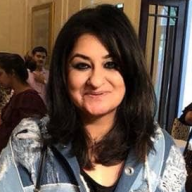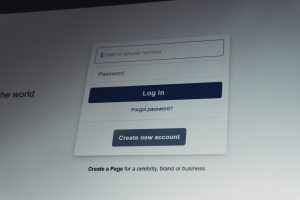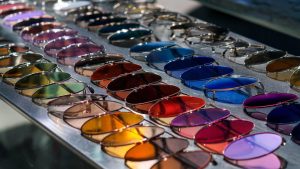Nearly 70% of Fortune 500 companies like Capital Group, Disney, and Dow are using Microsoft 360 CoPilot and most recently Estee Lauder Companies partnered with Microsoft for the creation of a custom agent to streamline thirty years of information, generate intelligence, and centralise insights in order to inform trend forecasting and consumer marketing. This reduces the time required to make data-driven decisions from weeks to minutes, reflecting how AI-powered companies are gaining an edge.

Organisations across industries are using agents to leverage AI, bending the curve on innovation, reshaping business process, reinventing customer engagement, and enhancing employee productivity. Estee Lauder has recognised the immense potential. Today skincare products that are in demand one day is cold the next; the need of the hour is to move fast. So, Estée Lauder Companies turned to Microsoft 365 Copilot to build a generative AI ecosystem, with Copilot Studio, Azure OpenAI Service and Azure AI Search, in order to gather data, identify trends, inform research and move their products faster.
Streamlining Data Access
ConsumerIQ—an agent built in Microsoft Copilot Studio—allows Estée Lauder Companies employees to identify consumer insights in real time—empowering them to make data-backed decisions. The Estée Lauder Companies has collected 80 years’ worth of consumer data since its founding — including surveys, clinical trials, promotions, and product usage — and has now made it accessible with generative AI.
Generative AI is truly transforming employee productivity. A marketing director, for example, won’t waste time searching for a customer survey. Instead, they’ll use natural language prompts to ask ConsumerIQ to provide actionable intelligence. This shift makes the work environment more stimulating by providing actionable insights for better decision-making.
“Beauty startups may be able to leap on the latest TikTok trend, but they don’t have 80 years of market knowledge like Estée does,” says Kalindi Mehta, global vice president for consumer foresight, strategy and predictive analytics at Estée Lauder. “And now Estée has the technology to harness it.”
It’s part of Estée Lauder’s broader corporate vision — Beauty Reimagined — to make the company faster and more agile. With Microsoft’s help, Estée Lauder Companies is leveraging the power of AI to help drive change and growth. And there’s a lot at stake: per McKinsey in January 2025, Generative AI’s impact could generate $9 billion to $10 billion in the beauty industry around the globe.
“Generative AI represents a significant opportunity for the beauty industry, creating more engaging customer experiences, getting products into the hands of consumers faster, developing new products more efficiently and sustainably and much more,” Shelley Bransten, Microsoft’s corporate vice president for Global Industry Solutions, said when the two companies announced the creation of the AI Innovation Lab — the next step in their strategic partnership.
Related Content
Estée Lauder Companies Inc. Appoints Brian Franz As Chief Technology, Data And Analytics Officer
Peter Jueptner, Group President-International, To Leave The Estée Lauder Companies
Top Best Sellers at Estée Lauder
How Is Estee Lauders Company leveraging AI?

The Estée Lauder Companies’ challenge has been that 80 years of data is spread among the company’s nearly twenty-five brands and the 150 countries it operates in. With generative AI, its ConsumerIQ agent will analyse the company’s archives and data to quickly pull up the most relevant insights, to help the team market its current products or develop a new one.
It can, for example, take hours to find, review and summarise PDFs and PowerPoints for use in a marketing campaign. With ConsumerIQ, an employee can ask the agent: “What are the latest trends for mascara use among Gen Z?” In seconds, ConsumerIQ will collect, summarise and deliver the answer. This frees the marketing team to focus on high value work like developing a marketing strategy for a mascara that appeals to its customers.
“I don’t have to read through three hundred documents anymore. I just ask the question and it goes in precisely and runs through the entire data set and then gives me the answer,” says Shilpa Niranjan, a global IT business partner at The Estée Lauder Companies who is working on the AI Task Force developing ConsumerIQ.
Let’s say an Estee Lauder Companies brand is thinking about introducing a new moisturiser in the Pacific Northwest. A marketing lead can submit a simple prompt to ConsumerIQ: “What are popular moisturizing routines among customers in Washington state, Oregon and Idaho?” ConsumerIQ searches documents, often complex PDFs, retrieves the relevant information and shares it — within seconds.
“This is now as simple as asking a question and getting an answer,” says Jayesh Mehta, a brand technology leader at Estée Lauder and a member of its AI Task Force. “Bringing the information (to) the fingertips as opposed to waiting for somebody to go research and bring that output three days later.”
These generative AI tools save decision makers critical time and frees employees from time-sucking at mundane work. The tools will also cut down on repetitive work, since it will be far easier to know what has already been done across Estée Lauder’s brands.
Only The Beginning
ConsumerIQ and Trend Studio are only the latest steps in Estée Lauder’s AI transformation. “They’re really looking at this as an AI platform and they can continue adding modules that enhance the experience to essentially… accelerate the time from detecting a trend on TikTok, matching it to a product and then making that marketable to the consumer in a way that they’re asking to receive it,” says Alexa Higgins, a global client director at Microsoft, who works with Estée Lauder.
In the future, for example, an agent could streamline manufacturing training. Instead of slogging through a dense training manual to learn how to perform one process, an employee could simply ask an agent to fetch instructions for that process in seconds. “It’s all part of our innovation mindset of ‘Hey, we need to be faster to leverage these technologies to enable our business in a new and different way,’ says Jennifer Lee, director of strategic initiatives and predictive analytics at Estée Lauder. “It’s really increasing our speed to be able to compete in the marketplace.”

Jasmeen Dugal is Associate Editor at FashionABC, contributing her insights on fashion, technology, and sustainability. She brings with herself more than two decades of editorial experience, working for national newspapers and luxury magazines in India.
Jasmeen Dugal has worked with exchange4media as a senior writer contributing articles on the country’s advertising and marketing movements, and then with Condenast India as Net Editor where she helmed Vogue India’s official website in terms of design, layout and daily content. Besides this, she is also an entrepreneur running her own luxury portal, Explosivefashion, which highlights the latest in luxury fashion and hospitality.











